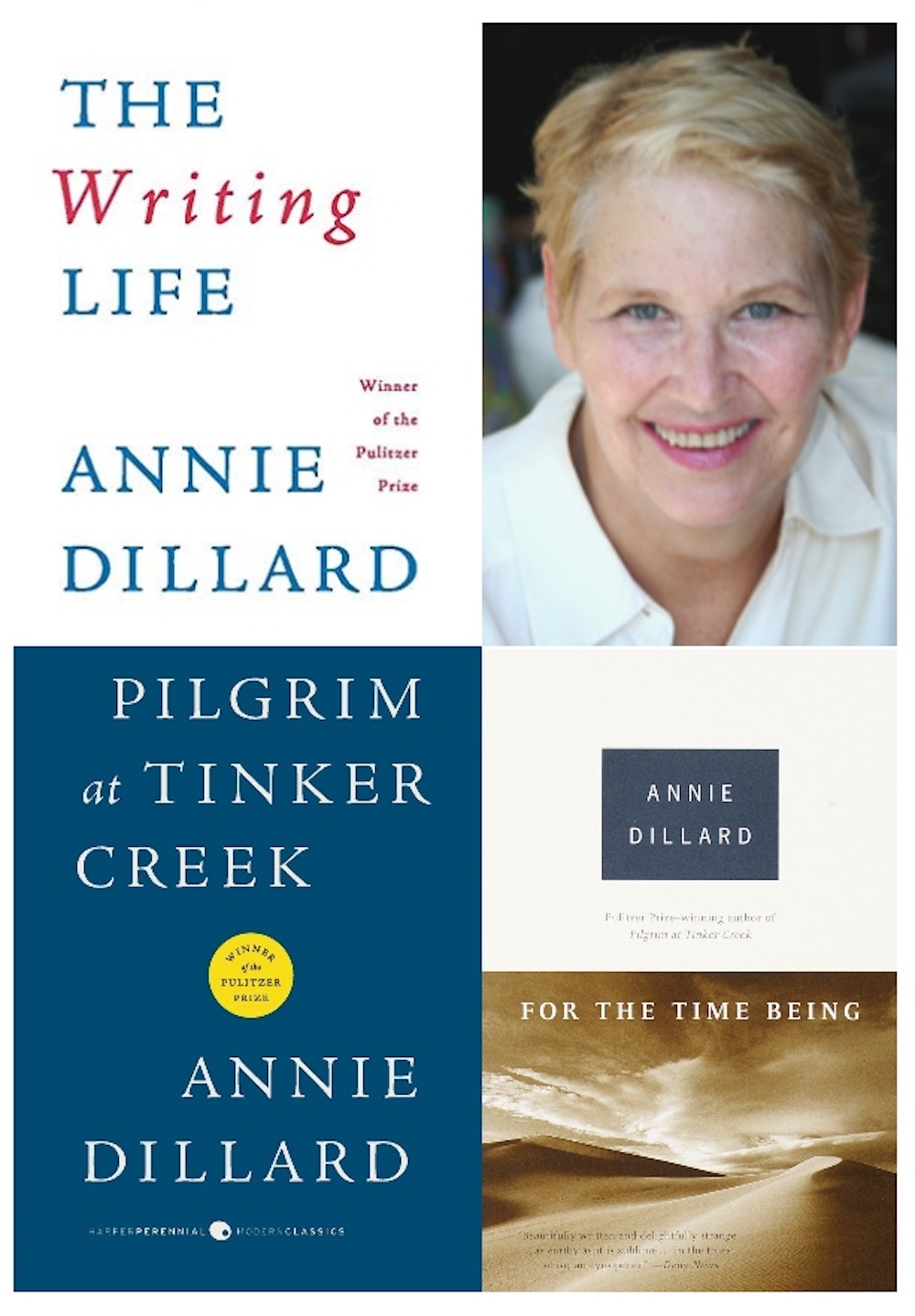1.
Some years ago, I attended a conference featuring boldface names and their thoughts on the topic of the essay as art. At 39, I’d written three failed novels, and essays felt like the last form left to me. I was desperate for tips, tricks, and whatever writerly chum they throw to audiences at events like these.
“An essay,” said Philip Lopate on the day of the conference, “is an invitation to think alongside me.”
I jotted his words in a Moleskine notebook and have been turning them over in my head and on the page ever since. The best essays are trips to terra nova, yes; but at heart, all essays depend on a simple sense of camaraderie. From the first word to the last, the writer of an essay is a guide, even if the piece never gets out of first gear. Each essay is a fellowship.
By Lopate’s definition, there’s no better essayist than Annie Dillard. Her thoughts go places no one else can see. Following in her path, you can sip the cold fire of eternity, cheat death in a stunt plane, or trace God’s name in sand, salt, or cloud. She didn’t invent the essay. Her most famous work isn’t classified as an essay. But in the cosmos of essayists, there’s Annie Dillard, and there’s everyone else.
2.
It doesn’t cost more than a couple clicks to get the complete text for Dillard’s piece on witnessing a solar eclipse. If you haven’t read it, you should; if you’ve read it before, reread it. “Total Eclipse” was published 40 years ago, but it’s still wild. I read it for the first time one winter night. I had a good hunch the moon would slip between sun and Earth in the narrative. But I wasn’t prepared for a lunatic opera. By the end of the piece I was like, wait, wait, who is this woman?
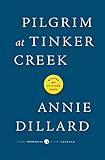
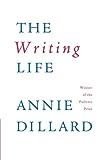 Despite being a septuagenarian who cut her teeth on theodicy, Annie Dillard’s name is practically a Twitter hashtag. She gets regular hat tip tweets, often quotations from her first prose book, Pilgrim at Tinker Creek, or from The Writing Life, her slim but wise book on craft. Writers admire her sleek writing and crisp turns of phrase, but plenty of her fans just love love love her without knowing how to explain why. I’m not sure I can explain why, either; there are too many good reasons.
Despite being a septuagenarian who cut her teeth on theodicy, Annie Dillard’s name is practically a Twitter hashtag. She gets regular hat tip tweets, often quotations from her first prose book, Pilgrim at Tinker Creek, or from The Writing Life, her slim but wise book on craft. Writers admire her sleek writing and crisp turns of phrase, but plenty of her fans just love love love her without knowing how to explain why. I’m not sure I can explain why, either; there are too many good reasons.
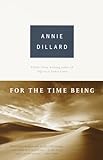 For one thing, her prose is sharp as a chert blade. Don’t know what an ancient Solutrean chert blade is? Neither did I, until I read For the Time Being, her last book of nonfiction. “Hold one of these chert blades to the sky,” she writes, describing an ancient knife made of chiseled stone so fine that “it passes light.” She continues:
For one thing, her prose is sharp as a chert blade. Don’t know what an ancient Solutrean chert blade is? Neither did I, until I read For the Time Being, her last book of nonfiction. “Hold one of these chert blades to the sky,” she writes, describing an ancient knife made of chiseled stone so fine that “it passes light.” She continues:
At its very edge the blade dissolves into the universe at large. It ends imperceptibly at an atom. Each one of these delicate, absurd objects takes hundreds of separate blows to fashion. At each stroke and each pressure flake, the brittle chert might – and, by the record, very often did – snap.
Here’s another reason to love her. She teaches you things. Not showy facts to prove her smarts. Not cheap trivia any sixth grader with a library card could tell you. She delivers the goods for questions you didn’t or wouldn’t have the tenacity to resolve. In a retrospective on her career, The New York Times cited her understanding that “the mundane itself — snails, fireplaces, shrubs, pebbles, socks, minor witticisms — is secretly amazing.”
This March, my nine-year-old asked how the frogs in the park could survive if their pond froze over. I don’t really know, I said. But Dillard knows. She did the work and put the answer right there on page 47 of the 2013 reissue of Pilgrim at Tinker Creek. She’s not showing off when she tells you about how frogs survive the winter by burrowing in mud and breathing through their skin. She’s just demonstrating that it’s possible to unriddle an unknown, if you put in the work.
Despite all the love you can find for Annie Dillard, despite her perch in the pantheon of great writers, there’s something off-kilter in the way people talk about her.
On its face, this is absurd. She’s part of the canon. She received a National Humanities Medal. She has written books that will outlive her. So what then is it that bothers me about how we talk about Annie Dillard? Why do I feel like there is something we’ve already begun to lose with respect to her?
A few years ago, no less a writer than Geoff Dyer attempted to position Dillard as a single star in the firmament of writers. He surveys her career in search of an answer to the question of what kind of writer she is exactly. He is uniquely gifted at indirectly saying what can’t be said about geniuses and grand artists (as his book on D.H. Lawrence demonstrates). Near the end of his Dillard piece, Dyer triangulates her position with respect to other writers he admires. Then he stops. I don’t want to say he fails. But the final product feels incomplete, as if he saw the summit but didn’t quite reach its seat.
Such difficulty in classifying Dillard is not unusual. You see it in casual profiles but also in scholarly essays and surveys of her work. Pick an article or two at random and you’ll likely see what I mean. In a CrossCurrents piece on ecotheology from 1995, Dillard is called a mystic, a contemplative, an exegete, a theologian, an ecological guru—and that’s literally just the first page.
In the Chicago Tribune’s 1999 review of For the Time Being, the reviewer rhapsodizes over the book’s sestina-like structure, calling it a “new form.” And it really is sui generis (for my money, it is her finest work), as she weaves a narrative that goes seven times around a weft of eight concepts: birth, sand, China, clouds, numbers, thinker, evil, and now. The Tribune’s reviewer marvels over Dillard’s deft ability to evoke the existential paradox that while each of us “matter not a whit, we also matter profoundly.” A rave review for a masterpiece by a phenom. But the newcomer to Dillard who reads this could be forgiven for thinking: what kind of person could or would dare to take up such a God’s eye view?
All Dillard’s high praise is well deserved; but it’s all also a problem, a significant one. In all these appreciations, all these assessments, each commentator, no matter how gifted or thoughtful—not a single one of them speaks of Dillard as if she belongs. She is a strange katydid, a demon flower. I do not excuse myself from this diagnosis, either. After all, didn’t I begin this piece by putting Dillard into a definitive category of one?
The way we talk about Annie Dillard makes me both sad and afraid. Sad because we are unable to appreciate in full the words she has written if we cannot see how she is, in the final analysis, just one of us. And afraid because affixing someone with otherness is the first stage in allowing that someone to be forgotten, and I am afraid of a world where writing such as hers could surface and then vanish.
3.
As Dillard herself writes, “The way to learn about a writer is to read the text. Or texts.” Consider a few of hers, then.
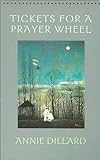 Her very first book, Tickets for a Prayer Wheel, was a poetry collection pieced together six years after she graduated from college. She found a publisher to bring it out in 1974. But she wasn’t destined to be a poet. Or, at least, not just a poet. Her next move was to do something that poets aren’t supposed to do: she published a book of prose. And she did it before dust could even collect on the first remaindered stacks of her poetry.
Her very first book, Tickets for a Prayer Wheel, was a poetry collection pieced together six years after she graduated from college. She found a publisher to bring it out in 1974. But she wasn’t destined to be a poet. Or, at least, not just a poet. Her next move was to do something that poets aren’t supposed to do: she published a book of prose. And she did it before dust could even collect on the first remaindered stacks of her poetry.
I’m calling it her first book of prose, but I could just as well call it the book of prose, as far as literary gatekeepers are concerned. Pilgrim at Tinker Creek (like the earlier book of poetry) came out when Dillard was 28 years old, and it’s the book that catapulted her from young writer to splashy, important transcendentalist almost overnight–or at least that’s what her publishers would have you believe. The edition that I bought earlier this year has a four page About Annie Dillard section and not one but two Afterwords, just in case I lose one, I suppose.
Upon its initial release, Pilgrim at Tinker Creek was praised by many critics, but there were more than a few notable voices with reservations. Eudora Welty famously grumped about not quite understanding some of the book’s lyrical asides. She also wanted more voices. A critic at Kirkus Reviews was downright galling: a brief review claimed Dillard’s reach exceeded her grasp, but patted her head for trying like a good girl.
Real talk: for a failed novelist or wannabe writer, it’s quite soothing to learn that a book the Modern Library now calls a classic had a rather bumpy roll-out. According to a historical note on Dillard’s website, the hardcover copies of Pilgrim didn’t actually sell very well. Only in paperback did it catch on. For all its merits, Pilgrim at Tinker Creek is not a page-turner. It’s a slow, steady, dark burn; the kind of conflagration that sightlessly devours oxygen, killing without the melodramatics of flame.
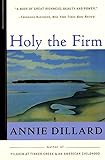
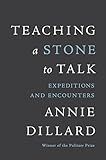 Is it a heresy to admit that of all Dillard’s nonfiction, Pilgrim at Tinker Creek moves me the least? The book is full of prose marvels, yes; it’s just that it feels like it’s written on spec. As if, full of youthful hubris, she said, Well, this fellow Thoreau wasn’t really doing anything so hard? I can do that. And then she did. I marvel far more at later books like the aforementioned For the Time Being or Teaching a Stone to Talk, her almost perfect essay collection. The structure of Pilgrim flags because it feels forced. Sort of the opposite of the impression given by her second book of prose, Holy the Firm.
Is it a heresy to admit that of all Dillard’s nonfiction, Pilgrim at Tinker Creek moves me the least? The book is full of prose marvels, yes; it’s just that it feels like it’s written on spec. As if, full of youthful hubris, she said, Well, this fellow Thoreau wasn’t really doing anything so hard? I can do that. And then she did. I marvel far more at later books like the aforementioned For the Time Being or Teaching a Stone to Talk, her almost perfect essay collection. The structure of Pilgrim flags because it feels forced. Sort of the opposite of the impression given by her second book of prose, Holy the Firm.
Holy the Firm runs less than 15,000 words. Twice as long as a long personal essay. Shorter than a feature in a weekend magazine. Yet I suspect more people have read about how she wrote the book—shack, island, airplane, fire—than have read the book itself. It’s worthy of the flame of her reputation. The letters do not smolder on the page, but the ideas surely do. Kirkus called this outing “a difficult, restless rumination,” and they weren’t wrong. It is a book about learning to live in the afterglow of life’s casual cruelty, about accepting the lot of whatever this thing is, this universe. Basically the plot of all her noteworthy work, which is to say, all of her books from here on out. Once she caught her stride, there was no stopping her.
In her 40s, Dillard joined the Roman Catholic Church. She’d grown up a Protestant but left the church as a teenager. She told an interviewer that she converted in middle age to keep close to God, even though she did not always agree entirely with the people who worshipped around her. In her essay, “An Expedition to the Pole,” she writes:
It is madness to wear ladies’ straw hats and velvet hats to church; we should all be wearing crash helmets. Ushers should issue life preservers and signal flares; they should lash us to our pews. For the sleeping god may wake someday and take offense, or the waking god may draw us out to where we can never return.
There is a way of reading Pilgrim at Tinker Creek that positions Dillard not as Thoreau’s heir but as a contemporary Christian writer and thinker. She employs the language of Christianity and speaks of creation and eternity and grace. But she’s not a religious writer, not really; religious language is just her jumping off point. She’s proposing to meet readers at the village church not because it’s her destination, but because it’s a large landmark we all know. Dillard’s subsequent books push further afield. She continues to insist on questioning God, rather than seeking God’s grace. The disappointment this engendered in some readers is evident, as seen in “Annie Dillard: Mistaken Mystic?”, an article from the journal of an evangelical society. Here the judgment on Dillard is brief, swift, and stark. The writer uses the kind of language that I recognize from growing up in a church: “She does not point to the Bible often enough,” and: “She does not understand how Jesus fulfills all of God’s promises and love.”
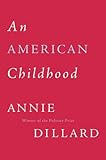 In her memoir An American Childhood, Annie Dillard describes how as a teenager she felt estranged from the people in the church pews around her. I recognize the conflict. I was a Sunday-School kid. I stood for the role of Joseph in the Christmas play. I sang in Easter programs. The judgy tone of the aforementioned journal is the tone that many keepers of the flame would use to dismiss someone who is being difficult because he or she is questioning rather than blindly accepting. Rigidity about how to believe, what to believe, an emphasis on dogma, on prescribed process, on blind tradition: this part of religious education stuck in my craw. But I accepted it. I had to. What other way of looking at the world was available to me back then?
In her memoir An American Childhood, Annie Dillard describes how as a teenager she felt estranged from the people in the church pews around her. I recognize the conflict. I was a Sunday-School kid. I stood for the role of Joseph in the Christmas play. I sang in Easter programs. The judgy tone of the aforementioned journal is the tone that many keepers of the flame would use to dismiss someone who is being difficult because he or she is questioning rather than blindly accepting. Rigidity about how to believe, what to believe, an emphasis on dogma, on prescribed process, on blind tradition: this part of religious education stuck in my craw. But I accepted it. I had to. What other way of looking at the world was available to me back then?
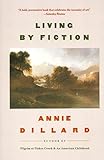 In her book Living by Fiction, Dillard writes: “Can we not loose the methods of literary criticism on the raw world? May we not analyze the breadth of our experience? We can and may – but only if we consider the raw world as a text … as a work of art.”
In her book Living by Fiction, Dillard writes: “Can we not loose the methods of literary criticism on the raw world? May we not analyze the breadth of our experience? We can and may – but only if we consider the raw world as a text … as a work of art.”
If someone had put this book, any book by Annie Dillard in my hands as a teenager, I would have turned the pages with quaking hands. She speaks in a register that anyone acquainted with religion can recognize. But she has the temerity to also point a finger at the heavens and say, You made this, now explain it.
By the time Dillard turned 50, she’d left the Catholic Church; she was striking out on her own again. No surprise. When it comes to God, Dillard is all about interrogation, not devotion; she wants an audience with the divine because she’s got questions, not because she wants to receive beatific truth. Again and again across her work, there’s a sense of inquiry, the inquiry of an alert human on the move through life. A life where God has gone silent, even if you believe he made this place where we all live.
In the end, she emulated that silence, intentionally or not. For decades she gave space to contemplate the mundane and overlooked aspects of life. She sought out and drew attention to silences, holy and profane, large and small, whatever caught her eye. She gave voice to details others would miss. Then, after a time, she found her own place in the silence and stepped into it.
4.
She wrote 11 original books over the course of 30 years and then, abruptly, she stopped. Suddenly, nothing. She has given a few interviews, sat with some journalists. A blurb here and there. But mostly, she’s gone silent; she has not published any form of nonfiction in two decades. Theories come and go as to why. But the only thing for certain is the totality of her withdrawal as a creator.
A prolonged silence can prompt questions that words or new texts cannot. Is she out of things to say? Is she angry? Is her message complete?
If Dillard were writing this essay, then I’m certain she would have found a way to note God’s famous periods of silence. After the Holocaust. After the earthquake at Lisbon. For the 400 years between the Book of Malachi and the Gospel of Matthew.
What does God’s silence mean? What is he doing? What is he thinking? What does Annie Dillard’s silence mean? What is she thinking? Does she have dementia? Does God have no heart? Does she have nothing left to say? Does God have nothing left to tell us?
Five years ago, the Atlantic ran a mean-spirited profile entitled “Where Have You Gone, Annie Dillard?” The piece begins with hearty praise for Dillard, but the meal turns sour long before the last course. The article annoys even as it explicates. The writer rightly criticizes people who class Dillard as nouveau Thoreau; but he botches the landing by veering into questions of intent, as if intentions were clear-cut as texts. Most cruelly, the article suggests that the very nature of Dillard’s inquiry is what has damned her to silence. That she was doomed to leave us hanging. Because she’s got the heartless eye of a distant god. Because she’s a cold fish. This is the scat of cheap iconoclasm. It doesn’t hang together as an argument. And it doesn’t match up with the Dillard who shows up in profiles, interviews, and the memoirs of former students.
One of Dillard’s best uncollected essays is titled, “How I Wrote the Moth Essay and Why.” In a few pages, she assesses both a previous piece of writing and her life at the time. She uses the critic’s scalpel in two directions at once. The resulting essay lays bare Dillard’s personal fears (childlessness, loneliness) and her preoccupations (what is the point of me? what am I trying to say?), and then she shows how all this motivated her to produce a piece of writing that was and wasn’t about those things. She also reveals her method of composition: She does not begin by looking down from an imperious height. She has no foreknowledge of what she is writing toward or about, at least not at first. She uses data from past journals and produces a “babbling” first draft and then a surgically altered revision. She is an artisan, working a chert blade.
During the first decade of her silence, there were rumors that perhaps she was suffering from cognitive decline. In 2016, John Freeman, a former editor for Granta tracked Dillard to Cripple Creek, Va., where she lived with her husband, the biographer Bob Richardson. Freeman wrote a profile of her current life, the out-of-the-way cabin, the backwoods store, the books she keeps reading. The passages about Dillard and her husband are the best part of the piece. Freeman writes: “Watching Annie and Bob over breakfast, editing each other’s stories and officiating over the presentation of flatware, coffee, second and third helpings, it’s clear that whatever came before, this is the show.” Of his wife, Richardson says: “She’s the smartest person I’ve ever met.” It’s sweet, the kind of thing that you want to hear from people who are entering into old age together. By the end of Freeman’s profile, Dillard addresses her silence, albeit with a kind of shrug. “I switched to painting,” she says. You don’t get the sense that she regrets the change up, or that she did it because her project ran out of steam. She just moved on. Not deeper into loneliness or isolation: rather into a more private kind of fellowship, the journey of real companionship.
But what about the writing? Is there any more writing? There is, and there isn’t. In a 2016 interview with Melissa Block of National Public Radio, Dillard speaks like someone who is aware of how many pages are left in her text of the world and who has reconciled herself to the limits that are built into our time here. She talks about writing. She’s still writing. But not for us. Really, just for herself, mostly. She’s already put more than her fair share into the world of texts, more than enough to keep the rest of us going.
DILLARD: I write a lot of emails. I write in my own journal when something extraordinary or funny happens. And there’s some nice imagery in there. I don’t think of what to do with it.
BLOCK: You don’t think about another book at this point.
DILLARD: No, I don’t. I had good innings, as the British say. I wrote for 38 years at the top of my form, and I wanted to quit on a high note.
Annie Dillard seems to have almost no other choice but to prod life, poke it, search every place in it for hidden, buried meaning, and then produce her own text, or texts, for herself sometimes, sometimes for others, sometimes for purposes she’s not even sure of–one more link in the long textual chain of being. There is a word for this kind of writer, the kind that acts like a guide, the sort who enters into a fellowship with you and brings you with her wherever her thoughts lead, high or low, grand or lowly, who writes about the world without even knowing what to do with it: essayist.
To be an essayist is a fine purpose, but a purpose lasts only so long. As with lives. Socrates is a man. All men die. Socrates must, well, you know the line. Last summer, during the haphazard malaise of the coronavirus pandemic, Dillard’s husband Bob Richardson died. He said of her in an interview near the end of his life: “I learned from her that you have to go all out every day. Hold nothing back. The well will refill.”
So we go on, filling the silence. Or, perhaps, finding the silences and listening to what they will tell us.
The day that I began writing this essay, I went for a run. This is how most of my essays begin. At first, they’re word knots and phrases in my head. Thoughts and observations and quotes and ideas, a mute mess. I go for a run and the ideas begin to knock loose from one another and then back together again in a pattern that makes sense, that gathers into something far stronger.
I ran as I often do along the edge of Riverside Park, past pre-war buildings on the Upper West Side, past plaques that commemorate where J. Robert Oppenheimer lived or where Edgar Allen Poe wrote his poems. I thought about history. I thought about how we all end up swallowed by silence. Traffic had snarled the on and off ramps from the West Side Highway. I thought about how even before we’re lost in history, we’re lost in our daily lives. I also thought of the Annie Dillard quote I see more than any other in social media posts: “How we spend our days is, of course, how we spend our lives.”
I stopped for Gatorade near the Museum of Natural History. On Columbus Avenue, I noticed a new bookstore. One I’d never visited before. I wandered inside to have a look. An essay section near the rear offered two columns of books. I went straight to the D’s. But Dillard’s books weren’t there. I searched the Staff Recommendations table. I searched the display table for Our Favorite Reads. Nothing. This made me angry. I didn’t turn over the displays or drive out the cashiers, but I kind of wanted to. Someone needs to change this, I thought. More people need to know about Dillard. That’s when I realized what I needed to do. That’s when I understood where this essay needed to go.
One more thing happened. The important thing. Exiting the bookstore in a huff, tired, irritated, I noticed the wreckage of a black BMW at the curb. It had been there earlier. But I’d walked right past it. I hadn’t slowed enough to notice. It was a total ruin, wheels gone, windows shattered, hood crumpled, left side flat as if smashfisted by a giant. There was no explanatory sign, no one standing watch, no one paying mind. Just a casual profundity. Like a perfect monument to all we don’t see, can’t see, won’t see, the marvelous terrible strange that is here and will be gone soon and no one will believe us that it was there once but is now gone because how do you frame the unexpected? You can’t frame or explain: you can only point and try to make others see. Did you see the wreck? Did you read Holy the Firm? Did you look up in time for the eclipse? Do you know Annie Dillard? Did I hear you call my name, or was that the voice of God?
Bonus Link:
—Line, Run, Breath: On Annie Dillard and the Circuitous Work of Writing
Image Credit: Wikipedia
